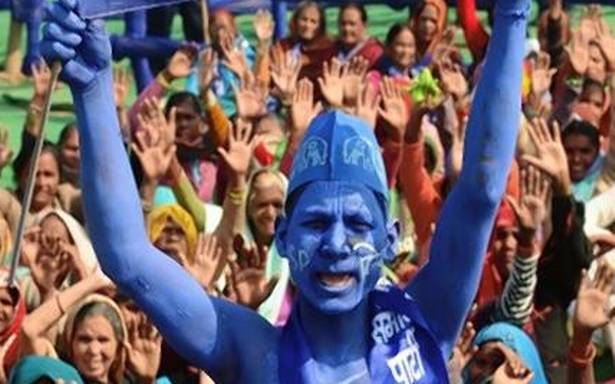 Image Courtesy: The Hindu
Image Courtesy: The Hindu
Holi is a Hindu festival celebrated in many parts of the country, particularly in North India as the festival of colours or the festival of love. The festival signifies the victory of good over evil, the arrival of spring, the end of winter, and a day to mend old wounds or relationships. It is believed that distinctions of caste, class, age, and gender are suspended during Holi. But examining these revisionist accounts would reveal the hold of caste-hegemony in the nexus of myth-making.
The Hindu Myth
The two-day festival begins with the night of Holika Dahan. According to Hindu scriptures, Holika was a demoness, who was burnt to death with the help of Vishnu. She was the sister of King Hiranyakashipu and aunt to Prahlad.
The story goes something like this: Prahlad even at the age of ten refused to worship his father Hiranyakashipu as the Sovereign Lord. To punish his son’s defiance, Hiranyakashipu had plotted with his sister Holika to kill him. Holika was given a boon by Brahma, the God of Knowledge, which made her immune to fire. She is believed to have plunged into a fire with Prahlad on her lap so that he would burn to death while she herself remained unharmed.
As he burnt, Prahlad is said to have continued praying to Vishnu, whom he considered the Almighty. As a result, Vishnu protected him and Prahlad survived, while Holika turned to ash.
A Bahujan Burning
In an article for Feminism in India, Pradnya Waghule calls the Holika Dahan, “a holiday premised on Bahujan burning.” She quotes from writer K. Jamnadas article, Holi – A Festival To Commemorate Bahujan Burning, where he argues that Holika was a Bahujan woman. He alluded to texts like Ambedkar’s Who Were the Shudras, to question our compliance with traditional narratives which associate the asuras or demons with the Bahujans and in doing so, allows the subjugation of the lower castes within the notions of racial and religious purity.
Many anti-caste critics and writers have written volumes challenging the historical canon; their writings serve as resistance, arguing for a refashioning of this Brahmanical canon. These narratives point out the gaps in history in order to demonstrate how the Vedic and Puranic stories which dictate our festivals have relied on erasing the story of the lower castes, by representing them as asuras. The narratives challenge the hegemonic constructs of “culture” manufactured by caste-society.
Another narrative that the Brahmins do not want you to know is the story or Tukaram’s death, on holi or dhulvad.
Tukaram was the greatest of the Marathi saints of the Varkari cult, who is denied the credit of its establishment. The Brahmanic scholars whitewashed his story to make it milder and more suited to their own narrative, even though he was said to been one of the most rebellious against Brahmanical tyranny. He criticized Vedic “knowledge”, Brahmanical rule, untouchability, and caste supremacy all his life.
He was arrested by the Brahmanical authorities, his writing was confiscated and all kinds of violence was done to him. The article tells us that Tukaram retaliated with satyagraha, fasting without food and water for thirteen days on a riverbank. He was supported by his people, who made his driving away impossible for the authorities to carry out. It is said that his struggle against Brahmanism continued for the next twenty-two years.
The day of his death
After all the years of torture, one day he was taken by the priestly classes to Vaikuntha as it were, in a special “vimana”, designed by the gods for the Shudras. This was yet another story fabricated to hide the mysterious disappearance of his body.
This day was the day of Holi, or “dhulvad” as is known in Brahmanic texts. It is said to be the day of obscenity, dirty deeds, and drunken bouts, the “garoba” and all that goes with it. The writer wonders why “[the] gods selected this day to send the vimana for him”. He urges all the dalit-bahujan devotees of Tukaram, to observe the day as “[a] day of mourning and not of rejoicing … as it was on this day that their saviour was murdered.”
Read More:
How the term “naxal” is used to target dalits, tribals and other subaltern sections of Indian society
India’s Dalit Spring: The OBCs and The Hindutva Game Plan




